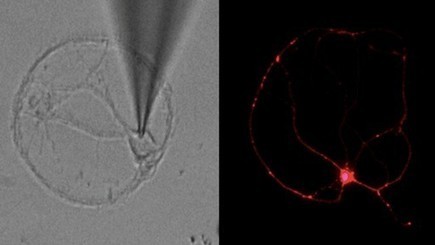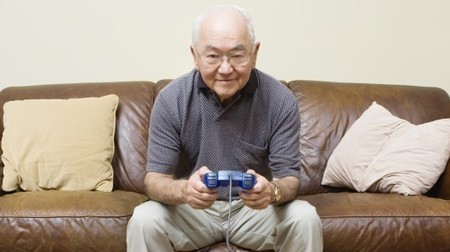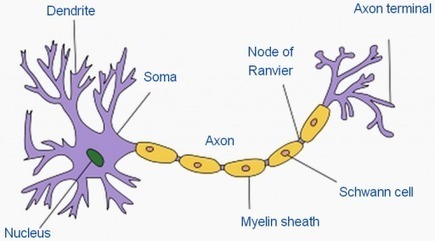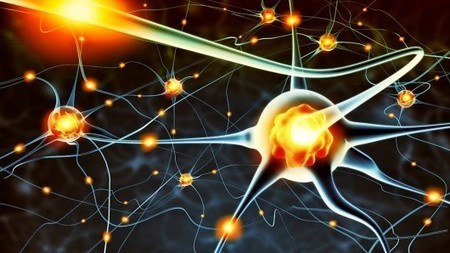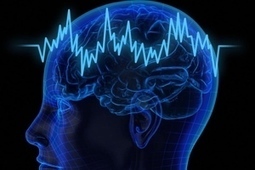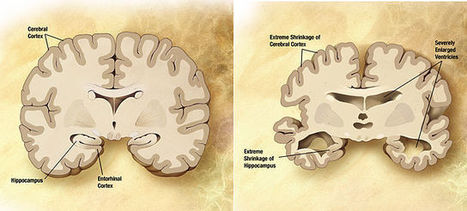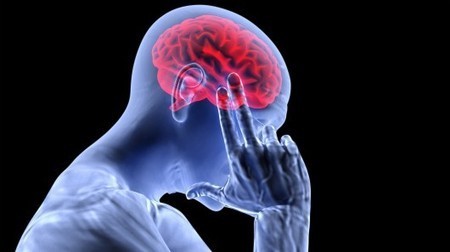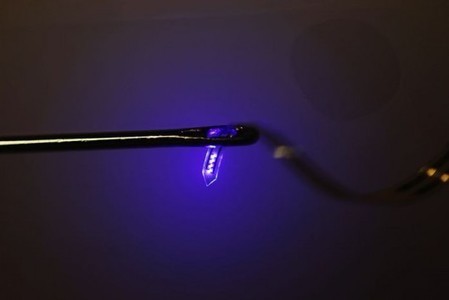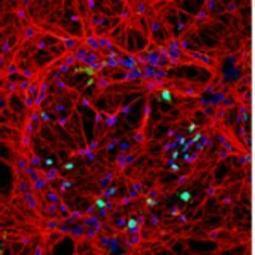 Your new post is loading...
 Your new post is loading...
The first experimental drug to boost brain synapses lost in Alzheimer’s disease has been developed by researchers at Sanford-Burnham. The drug, called NitroMemantine, combines two FDA-approved medicines to stop the destructive cascade of changes in the brain that destroys the connections between neurons, leading to memory loss and cognitive decline.
Scientists from the University of Iowa are now claiming that by playing a specific video game, test subjects aged 50 and over were able to stop and even reverse the trend. In fact, those that played a particular game showed as much as seven year's worth of cognitive improvement when retested one year after the study.
The future of health care could be found in a tiny, paper-thin skin patch that collects vital information.
The Bio-patch sensor developed by KTH Royal Institute of Technology researchers is inexpensive, versatile, and comfortable to wear. It measures bioelectrical signals through the skin when applied to different parts of the body.
Researchers at the Stanford University School of Medicine have succeeded in transforming skin cells directly into oligodendrocyte precursor cells (OPCs), the cells that myelinate nerve cells (wrap them in the insulating myelin sheaths that help nerve signals propagate) and would work successfully when transplanted into the brains of mice with a myelin disorder.
Researchers at Yale University have found a way to effectively turn back the clock and make an old brain young again. As we enter adulthood, our brains become more stable and rigid when compared to that of an adolescent. This is partially due to the triggering of a single gene that slows the rapid change in synaptic connections between neurons, thereby suppressing the high levels of plasticity of an adolescent brain.
A device that delivers electrical shocks directly into the brain has been shown to alleviate symptoms in people with early stage Parkinson’s disease better than the best treatments being used today. Normally reserved as a last resort for patients with severe symptoms and for whom drugs are ineffective, the deep brain stimulation’s newly found effectiveness could promote it to the first line of attack against the disease at the earliest detection of symptoms.
Researchers have discovered a molecule that accumulates with age and inhibits the formation of new neurons. The finding might help scientists design therapies to prevent age-related cognitive decline.
The number of U.S. residents aged 65 and older living with Alzheimer's disease is expected to nearly triple to 13.8 million by 2050 as aging baby boomers swell the ranks of those living with the brain-wasting disease, U.S. researchers said on Wednesday.
We tend to think of reason and emotion as being two different things, but it turns out that there may not be a choice between the heart and the head. A University of Illinois team, led by neuroscience professor Aron Barbey, has made the first detailed 3D map of emotional and general intelligence in the brain, that shows a strong overlap of general and emotional intelligence.
The European Commission will award a total of 2 billion euros for research into brain disease and into the "miracle material" graphene which could be used to make flexible electronic devices and could lead to superfast Internet speeds.
New research in the FASEB Journal by NIH scientists suggests that a small molecule called TFP5 rescues plaques and tangles by blocking an overactive brain signal, thereby restoring memory in mice with Alzheimer’s — without obvious toxic side effects. “We hope that clinical trial studies in AD patients yield an extended and a better quality of life, as observed in mice upon TFP5 treatment,” said Harish C. Pant, Ph.D., a senior researcher involved in the work from the Laboratory of Neurochemistry at the National Institute of Neurological Disorders at Stroke at the National Institutes of Health.
Scientists say they have found a way to distinguish between different types of dementia without the need for invasive tests, like a lumbar puncture. US experts could accurately identify Alzheimer's disease and another type of dementia from structural brain patterns on medical scans, Neurology reports. Currently, doctors can struggle to diagnose dementia, meaning the most appropriate treatment may be delayed. More invasive tests can help, but are unpleasant for the patient.
Scientists at VTT Technical Research Centre in Finland have developed new software called PredictAD that could significantly boost the early diagnosis of Alzheimer's disease. The comparative software contrasts patient’s measurements with those of other patients kept in large databases, then visualizes the status of the patient with an index and graphics. The support system and imaging methods were developed by VTT and Imperial College London. The researchers used material compiled in the U.S. by the Alzheimer’s Disease Neuroimaging Initiative based on the records of 288 patients with memory problems. Nearly half of them, or 140 individuals, were diagnosed with Alzheimer’s disease on average 21 months after the initial measurements, which is about the same as the current European average of 20 months.
|
Daily supplements of curcumin – the natural pigment that gives the spice turmeric its yellow color – may support healthy aging, with two new studies indicating benefits for arterial aging and cognition.
The first known method to permanently bypass the blood-brain barrier*, using mucosa, or the lining of the nose, has been demonstrated by researchers in the department of Otology and Laryngology at the Massachusetts Eye and Ear/Harvard Medical School and the Biomedical Engineering Department of Boston University.
The method opens the door to new treatment options for those with neurodegenerative and CNS disease.
Optogenetics is the process by which genetically-programmed neurons or other cells can be activated by subjecting them to light. Among other things, the technology helps scientists understand how the brain works, which could in turn lead to new treatments for brain disorders. Presently, fiber optic cables must be wired into the brains of test animals in order to deliver light to the desired regions. That may be about to change, however, as scientists have created tiny LEDs that can be injected into the brain.
University of Wisconsin-Madison scientists have transplanted neural cells derived from stem cells from a monkey’s skin into its brain and watched the cells develop into several types of mature brain cells.
After six months, the cells looked entirely normal, and were only detectable because they initially were tagged with a fluorescent protein.
Scientists at the University of Wisconsin-Madison have created a device known as a PoNS, that shows promise for the treatment of traumatic brain injuries, strokes, or the effects of diseases such as Parkinson’s and multiple sclerosis. Researchers at the U.S. Army Medical Research and Materiel Command are now conducting a study on the device, which works by stimulating the patient’s tongue.
Scientists at Carnegie Mellon University‘s Center for Cognitive Brain Imaging (CCBI) have used a new combination of neural imaging methods to discover exactly how the human brain adapts to injury. When one brain area loses functionality, a “back-up” team of secondary brain areas immediately activates, replacing not only the unavailable area but also its confederates (connected areas), the research shows
A new drug designed to prevent the early stages of Alzheimer’s disease could enter clinical trials in a few years’ time, according to scientists.
Alzheimer’s disease begins when a protein called amyloid-β (Aβ) starts to clump together in senile plaques in the brain, damaging nerve cells and leading to memory loss and confusion.
Researchers at the Institute for Bioengineering of Catalonia (IBEC) and the University of Barcelona in Spain have discovered a biomaterial that can generate new differentiated neural stem cells, as part of a project to develop an implant that allows brain repair and regeneration.
Stem cells given in the vital period immediately after a stroke may aid recovery, suggest researchers. Rats injected with stem cells 30 minutes after a stroke had almost normal brain function restored within a fortnight. The research, published in the journal Stem Cell Research and Therapy, adds to others which have found that stem cells could aid stroke patients by boosting the body's ability to repair tissue damage.
Many forward-thinking scientists are looking into solutions that would strengthen the brain by reinforcing its neurons with non-biological neurons made from carbon nanotubes. These new artificial neurons would not only act as electrical bypass circuitry, giving patients a ‘fail-safe’ system should their brain become damaged, but would also enhance performance of healthy cells, providing ‘superhuman’ brain functions. Thoughts could be processed millions of times faster.
New research suggests it might reduce the risk of developing cancer, dementia and other diseases.
Rui Yang, Kazuya Terabe and colleagues at the National Institute for Materials Science (NIMS), and the International Center for Materials Nanoarchitectonics (MANA) in Japan and at the California NanoSystems Institute/UCLA have developed “nanoionic” (processes connected with fast ion transport in all-solid-state nanoscale systems) devices capable of a broad range of neuromorphic and electrical functions.
|



 Your new post is loading...
Your new post is loading...

